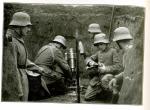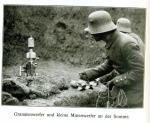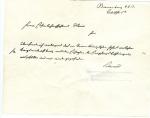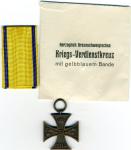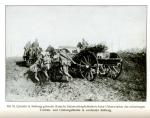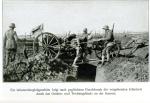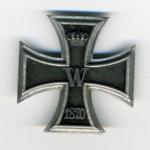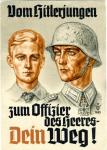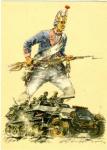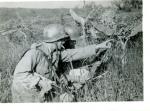
Bernhard H.Holst
For Deletion-
Posts
1,481 -
Joined
-
Last visited
Content Type
Profiles
Forums
Blogs
Gallery
Events
Store
Everything posted by Bernhard H.Holst
-
Wacky new hand grenades....
Bernhard H.Holst replied to Chris Boonzaier's topic in Firearms & Ordnance
Hello: I liked one of the comments : Quel monde de M... And he is right. Someone on this form closes with something like " once you pull the pin the grenade is not your friend". That could also go with this new fangled thingie... Bernhard H. Holst -
Hello Prussian: The Mattei system called a snake was meant to create gaps in the barbed wire obstacles. The gap created by a snake of 10 meters length was from 8 - 12 meters wide caused by 90 pounds of explosives. It seemed of clever design and reminded me of snake-like explosive charges projected across a minefield and when exploded would set off adjacent mines thus creating a safe passageway through the minefield. Employing artillery to flatten or tear barbed wire obstacles apart seemed not to have been effective and engineer placed charges like Bengalore torpedoes may not have been long enough. Based on my readings the barbed wire remained an obstacle to recon with and often times caused the "poor bloody infantry' to complain about the wire having hardly been disturbed when they came upon it. Bernhard H. Holst
-
The Medal of honor army version on ebay uk, nice?
Bernhard H.Holst replied to kaiser1900's topic in United States of America
Hello readers: In the past there were offerings by German dealers, some with good provenance . I have abstained from purchase because of residence in the States and not being quite clear of the legal aspects. Even with intention of donation to a museum. The prices were not exceptionally high though I could not furnish an exact figure. Bernhard H. Holst -
Hello: Thanks to Chris for showing this interesting document. This is also a first for me. Her parents were both deceased at the time of her enlistment in 1917and she certainly had a specialty as telephone operator already in civilian life and most likely served as such in a motor pool. Also she was kept on after the armistice until spring of 1919. Also thanks to the several comments and the additional information on the auxiliary female personnel. Bernhard H. Holst
-
France Anniversary Combat of Camerone, Mexico, April 30, 1863
Bernhard H.Holst replied to Bernhard H.Holst's topic in France
Hello Francois. Thank you for the pictures. On the lower picture between the pioneers one can clearly see the small casket that contains the artificial hand of Capitaine Danjou being carried by one veteran who is escorted by two others. To the far left the principal band of the Legion and I would venture to guess a delegation of the French Army Officers School St. Cyr. The middle picture clearly puts it: " Their life rather than their courage left these French soldiers." This must be a picture of the plaque affixed to the French memorial at the site of the combat. Bernhard H. Holst -
France Anniversary Combat of Camerone, Mexico, April 30, 1863
Bernhard H.Holst posted a topic in France
Hello readers. Each year on April 30 the French Foreign Legion observes the anniversary of the combat at the farm of Camerone during which an understrength company of the French Foreign Legion did resist the repeated attacks of superior Mexican forces. This company was under the command of one handed Capitaine Danjou who fell after some hours of combat. The last five survivors of the company attempted a bayonet charge but the Mexican commander ordered that they be spared. The artificial hand of Capitaine Danjou recovered from the site, is kept at the museum of the Legion at its headquarters. It is presented to the assembled troupes that day and is carried by a veteran , highly decorated who is escorted by two other former members. The account of the combat is read to the assembled troupes as it is at all locations where units of the Legion are deployed. Of course this year's events will be special because that legendary combat took place 150 years ago. It may also be of interest that this writer's best friend during two deployments in Vietnam , the retired Brigadier-Chef C. Kopanczyk, Legion d'Honneur and Medaille Militaire one year was one of the escorts. He tragically died during a forest fire near the Legion retirement facility in the south of France in August of 1989. The facility itself was also heavily damaged. Bernhard H. Holst former member 1951 - 1957 -
Hello: I just obtained the book " Der Weltkrieg in seiner rauhen Wirklichkeit" with WW I 600 original photos of the German War Photo and Film Office as well as the German war photographer Hermann Rex. I located two photos of Infanteriebegleitbatterie ( Infantry accompanying battery) which are shown below. I do not quite know the difference between Infanteriegeschuetz and Infanteriebegleitgeschuetz (infantry gun and infantry accompanying gun) but guess infantry guns to be of relatively small caliber i.e. 37 mm or so. In any case the photos illustrate the difficulties artillery deployed in an accompanying role encountered. From memory I think the later ( late 1930's) developed assault guns had their origins in the Infantry Accompanying Guns. Bernhard H. Holst
-
Hello readers. I had the good fortune to acquire the Iron Cross 1.Class for the time period 1870/71 shown below. The manufacturer is Wagner and I consider it in very good condition. It has been in a collection for at least the past fifty years and by that fact alone, at least in my mind establishes it as the genuine article. Enjoy the view. Bernhard H. Holst
-
EK 1914 Irritates the hell out of me.....
Bernhard H.Holst replied to Chris Boonzaier's topic in Germany: All Eras: The Iron Cross
Hello Chris. Thanks for showing this. This man served the entire war on the Western Front including during the worst part of the Battle of Verdun. The munition transport, really all transport coming anywhere near the frontlines were arty targets and oftentimes with devastating results. The observation means re. balloon, airplane and other were more and more utilised with good effect. I dare say he deserved the cross. Bernhard H. Holst -
Hello Chris. When I saw 14.Battery I was thinking Inf.Begleit Batterie or Nahkampf Batterie. David Edkins "The Prussian Orden Pour le Merite History of the Blue Max" does not shed any more light on this officer's unit. BTW: Helmut Weitze's update shows a book by a former officer of Bay. Leiber Rgt., seems mainly about the Verdun battles. In case you have not seen it. Bernhard H. Holst
-
Hello Chris. Wm. E. Hamelman states the date of the award as June 23, 1918 as Lt. d.Res. and commanding officer of 14th Artillery Battery ?? Award for Battle of Chemin des Dames, capturing a French position on May 27, 1918. Also in recognition of the successful crossing of the Aisne River on the Western Front. Bernhard H. Holst
-
Two examples of 3rd Reich Propaganda Postcards
Bernhard H.Holst replied to Bernhard H.Holst's topic in Other Collectables
Hello John. Thanks for the link. Being confused by the "translation" into English the original, German version is so much clearer. The man had a tragic life but reading the many , different companies for which he worked his talents were certainly appreciated. Quite a number of those manufacturers mentioned are either today unknown or have disappeared. I never would have thought of him having made such impact, so did not take time to check his background. Thanks again, Bernhard H. Holst -
Two examples of 3rd Reich Propaganda Postcards
Bernhard H.Holst replied to Bernhard H.Holst's topic in Other Collectables
Hello John. As you mention the first card clearly shows Willrich as the artist as do the majority of the cards I kept for sentimental reasons and which cards are well known. The second shows a small inscription on the lower right edge, one could read perhaps as "Gotjunke 42"? The reverse gives the name thus " Zeichnung Gotschke" or drawing Gotschke. This beneath "Panzergrenadiere Junge Waffe - alte Tradition" or Armored Grenadiers Young arm - old tradition. Bernhard H. Holst -
Two examples of 3rd Reich Propaganda Postcards
Bernhard H.Holst posted a topic in Other Collectables
Hello readers. Here are two examples of third Reich propaganda postcards from my small personal collection during WW II period. I selected these two for showing here because I believe them to be seldom seen. They are in my opinion carefully crafted and appealing to the young minds. The caption : " Vom Hitlerjungen zum Offizier des Heeres Dein Weg" clearly shows the path to take or 'From being a Hitler youth to being an officer in the Army Your path" And the second one: Cleverly ties Frederick the Great's grenadiers to the present day Armored Grenadiers. Bearing in mind that Frederick II (or better known as Frederick the Great) was a favorite propaganda subject during the 3rd Reich. Movies such as "Der Grosse Koenig" ( The Great King) or "Kadetten" ( Cadets) and others tied neatly into the period of war against great odds which were mastered by King Frederick. Both images originated from the Army Personnel Office not Dr. Goebbels' Ministry. I hope you like them. Bernhard H. Holst -
France Discipline and enforcement, French Foreign Legion
Bernhard H.Holst replied to Bernhard H.Holst's topic in France
Hello readers: thanks to Chris for further information and videos. To the best of my recollection I remember only one instance of a slapping incident which I personally witnessed and found entirely justified. After the relocation of our unit to the southern region of Vietnam following the armistice of the Summer of 1954 with the subsequent evacuation of the northern area by us in 1955, our first location was in the port area of Saigon. The National Army of Vietnam was in the process of cleaning house by eliminating the armed sects which had sprung up during the proceeding years and which had gained an intolerable influence. In particular the Binh Xuyen which controlled gambling and prostitution in the greater Saigon area. During the cleansing operations the French Forces remaining were neutral and consigned to their locations which included us. Upon the ending of fighting the restriction of remaining in quarters were lifted with the severe admonition that any lateness in return to quarters or similar would be followed by renewed restrictions. Sure enough while delivering the evening report at the orderly room I witnessed two guards escorting a drunk and disheveled legionnaire. He had been brought to our guard post by Military Police and was already overdue by some considerable time. The Adjudant d'Escadron, (Troop Sergeant Major) a one-eyed senior N.C.O. known to be as fair and just as one can be, just stepped up to him and slapped him a good one left and right. Restriction to quarters was re-instituted for several days. In my continuation number three I mentioned my good friend , Sergeant Dupont. Here is a picture of him: From your left: unknown, Sgt. Dupont , Medaille Militaire and Sgt. Oberstar, Medaille Militaire. Sgt. Dupont parachuted on the besieged Dien Bien Phu in April 1954 without having been a qualified parachutist. He was severely wounded but survived the battle. I met him in Sidi Bel Abbes while he was on duty at the monthly publication of the Legion, the Kepi Blanc. Sgt. Oberstar worked with me at the ORT which applied aptitude tests to new enlistees and personnel awaiting new assignments. Bernhard H. Holst -
Deutsche Schulen...... ;-)
Bernhard H.Holst replied to Chris Boonzaier's topic in Deutsche Kaiserreich: Man spricht Denglish
Hello Chris. Having learned to write on a slate and still doing that in 2nd until 3rd class when graduating to pen and paper this was not to the best of my recollection part of the program !!! Bernhard H. Holst -
France Discipline and enforcement, French Foreign Legion
Bernhard H.Holst replied to Bernhard H.Holst's topic in France
Hello readers: fourth and last continuation: La Discipline fait la Force des Armees my French is shaky, please forgive Valeur et Discipline these slogans are still in my memory besides the more known: Honneur et Fidelite Legio Patria Nostra During my six years of service in the ranks of the French Foreign Legion the number of personnel making up its ranks was certainly the highest ever. Even though large numbers of Vietnamese were enlisted to reinforce the individual formations and the fourth and higher battalions of all infantry regiments consisting of close to the total complementof Vietnamese, discipline had to be instilled and maintained. I believe it to have been successfully implemented . The existence of two disciplinary companies, one in Colomb Bechar, Algeria and one on an island near the Central Vietnamese coast may have had a deterrent effect to some of the "tetes dure" ( hard heads). Chris has given us an idea of the Bat Af (Bataillon d'Afrique") meant to accept offending members of French Colonial Forces for " reeducation". Not much is known of the Compagnie de Discipline, which had their own unit insignia and I believe legionnaires sentenced to a time there, had their duration of sentence added to their initial 5 year enlistment. One sort of in- unit punishment I had heard of was that of "tombeau" where the offender had to dig a grave size, shallow hole in which he was to spend varying time regardless of weather. This was not in use in our outfit until a newly assigned N.C.O. attempted to introduce it. Bystanders demonstrated their displeasure with such harassment of troops with the result of immediate release of the offender except for his filling the hole. As indicated earlier this account is limited to my own, personal experience ,my overseas duty was mainly spent in units composed of relatively small numbers of legionnaires though they were not especially selected. So it may not be representative of conditions prevailing elsewhere. I never did harbor any resentment over the rather light punishments given to me, doing the crime one must do the time. I have attached a picture of the later Marechal des Logis M. who took his own life in the Spring of 1954 as described above. He was a good assistant- then squad leader, not very outgoing but respected by his men and his comrades. He came to grief over a woman, a not so unknown situation. I was not close to him but should like to make mention of him nevertheless. I would like to thank all readers of this account which I now believe should have been much shorter but in particular my thanks go to those who placed kind comments. Brigadier M. showing riflegrenade loading/aiming to Trooper Ngo in early January 1953. Trooper Ngo was killed in action just a few days later on 7 January, 1953. Bernhard H. Holst -
France Discipline and enforcement, French Foreign Legion
Bernhard H.Holst replied to Bernhard H.Holst's topic in France
Hello readers. third continuation: This writer attained the rank of Sergeant in 1956 and with considerable delay after successfully completing a N.C.O. Candidate Course while still stationed in North Vietnam following the armistice in July 1954. The delay was caused by the dissolution of the several Legion specialty units such as transportation, repair and engineering units which caused a sudden glut in N.C.O.'s all needing new homes so to speak. In addition hospitalization for reason of a severe dysentery with a subsequent sanitary return to North Africa constituted a separation from my regiment and interrupted any chance of advancement in a "normal" manner. Only permanent assignment to Headquarters in Sidi Bel Abbes after campaign and medical recovery leaves with a personal intervention by my new commanding officer, Chef des Escadrons Drapied (Major) secured this advancement in rank. Being a very junior sergeant made the assignment to all the choice duty slots automatic, such as Sergeant of the Week, or in charge of alert- or fire intervention platoons and what have you. During the presentation of the ready fire fighting platoon to the major in charge of general services for headquarters and having to give my particulars including the department assigned to, this major saw fit to make rather derogatory statements about this fairly new one which applied aptitude tests to new enlistees and veterans being processed for reassignments and such. I reported this incident to my commanding officer who later told me to have taken up the matter with the offending officer. There were no repercussions to me. I felt the need only once to take a name and number of a legionnaire. This happened while in town in the company of a good comrade, Sergeant Dupont ( yes, Dupont) who walked with the aid of a cane, had jumped on Dien Bien Phu in one of the desperate attempts to reinforce the garrison by non-jump qualified personnel and survived captivity. He was then decorated with the Medaille Militaire. A closely passing Leg. 2ieme classe then deliberately failed to salute us which was regulation ( at that time ). I stopped him and received the stock explanation of not having seen us. I took his name, service number and assignment because of his disrespect to my highly decorated and disabled comrade. My comrade later asked me not to pursue the matter which I heeded. At least some scare must have been created. In case I may have created the impression of my own personal record having been unblemished let me correct that this instant: I raked up a total of three punishable offenses, but a bit like someone put it with a British military background, crimes of which three were found out. - number one offense: missing evening roll call ( was in the mistaken belief of senior brigadiers ( Brigadier-Chef) having the unwritten privilege of staying out till midnight without leave. Duty N.C.O. of the week tagged me and got even for a previous personal encounter when he unsuccessfully bullied members of my platoon. He was not smart enough to check later as he would have noted my absence till the small hours of the morning. The resulting seven days restriction to quarters kept me away from more comfortable nights but could have been worse if the true extent of my absence would have been revealed. - number two offense: having interfered with the performance of his duties and reduced his status as a N.C.O.of the quartermaster in the presence of troopers and lower ranked legionnaires . Q.M. took inventory of furnishings which were not really on official rolls but were transported by us when abandoned by other formations during the evacuation from North Vietnam due to lack of transport which we happened to have ( known as "debrouiller"). Because my choice of berating the Q.M. for the unjustness of his action "in public" forced him to reporting the incident up the ladder. The resulting nine days of regimental prison by the troop commander was lenient because it avoided the docking of pay which began with ten days. To my recollection company or troop commanders had the authority to sentence up to a maximum of fifteen days. Yours truly spent one night in the bedbug infested small brig and then began a long delayed hospital stay in Saigon to tackle a severe dysentery . - number three offense: a run-in with the Military Police in Sidi Bel Abbes who one evening while out on the town pounced on my comrade who had the rank of senior corporal ( Caporal-Chef) because of my interference on his behalf. I thought their handling unjustified and too rough. An invitation to the commander of the Military Police Platoon ended with mutual dissatisfaction because of the platoon commander, an Adjudant-Chef, believing shouting to be more impressive in making his points. He kicked the case upstairs when I stated his attempts not to be effective due to loudness. A subsequent date with an officer of the staff of the regimental commander resulted in ten days restriction to quarters . I believe the leniency was caused by this officer being the brother of the then Lt. Xavier de Cacqueray who was my commander in Vietnam. My personnel file must have shown this and possibly my wearing the crest of the Amphibious Group on my shoulder board as was the custom. ( of note; this officer had lost a leg in Dien Bien Phu). He also strongly reminded me that fraternization between N.C.O.'s and lower ranks was not allowed though this was not a part of the offense . a short continuation to end this thread to follow Bernhard H. Holst -
France Discipline and enforcement, French Foreign Legion
Bernhard H.Holst replied to Bernhard H.Holst's topic in France
Hello readers. 2nd continuation: - here is the recollection of the strange behavior of a French field grade officer and his swift departure later. A major and second in command of our Amphibious Group ( a battalion size formation) generally was generally believed to be of no use because of fondness of the bottle. My personal experience was that of my being in charge of the base camp guard during one day time as a brigadier ( corporal ) when word reached me to immediately come to the N.C.O. Mess. Arriving there a found a somewhat merry group including the major ( above ) and an AFAT ( feminine auxiliary in the army). Of course I presented myself to the major by giving rank, name , presently in charge of the guard, time in service and in rank. The major , clearly somewhat affected by drink, pointed to a legionnaire just outside the door, identifying him as his driver and ordered me to take him into custody and to the regimental prison and lock him up. The assembly found it funny. Complying with that order the legionnaire whom I knew slightly, said not to take it too seriously because, when in his cups the major frequently acted strangely. He would come for him when ready to leave. So off into the brick oven the driver went. After some time the major appeared and told me to guide him to the brig. After my unlocking the door the officer said to his driver: "You see one would not keep animals in this place but I keep you here. Come on lets go". Some little time later while on operation in the rice paddies of the Red River Delta we spent the night around a fortified outpost in which group headquarters was quartered. That night the major supposedly missed the way out when nature called but mistook the colonels camp bed for a suitable place. That incident ended that officer's active service with us in a very sudden manner. Of course this story circulated like a flash among the troops, every one glad to be rid of an officer who did not contribute to the war effort. In retrospect it seems to me that officers found wanting were transferred with their further fate unknown to us. Some other unit having to put up with them? In regards to N.C.O.'s and ranks below that who committed crimes or severe breaches of discipline one had a good idea as to what fate befell them but there were other cases as shown in the following incident of a sad nature. The French Foreign Legion during the Indochina conflict had two Paratroop Battalions deployed there . On occasion some of their troops for varying reasons were transferred to other formations. This happened with two who were assigned to my company. They turned out not to be outstanding soldiers. One was made a member of my good comrade Brigadier Kopanczik's squad who was not very happy as it turned out. On one operation underground diggings were detected and oral summons issued. With no results after several repeats an "offensive" ( blast only) hand grenade was let down. Our tunnel scouts then removed two young girls who were unconscious and were wearing white blouses, a sure sign that they were not enemy personnel. The former paratrooper shot both with his MAT sub machinegun. Brig. Kopanczik being very upset and following a decided grumbling in the ranks of his Vietnamese, challenged him on this and was given a sorry excuse of an accidental discharge of his weapon. This was nearly impossible to happen with that weapon. Kopanczik asked my advice on the matter and I told him to immediately report the matter to our Sergeant Major and Platoon Leader which he did. The murdering man was gone quickly after our return to base and his further fate is unknown to me. to be continued.... Bernhard H. Holst

